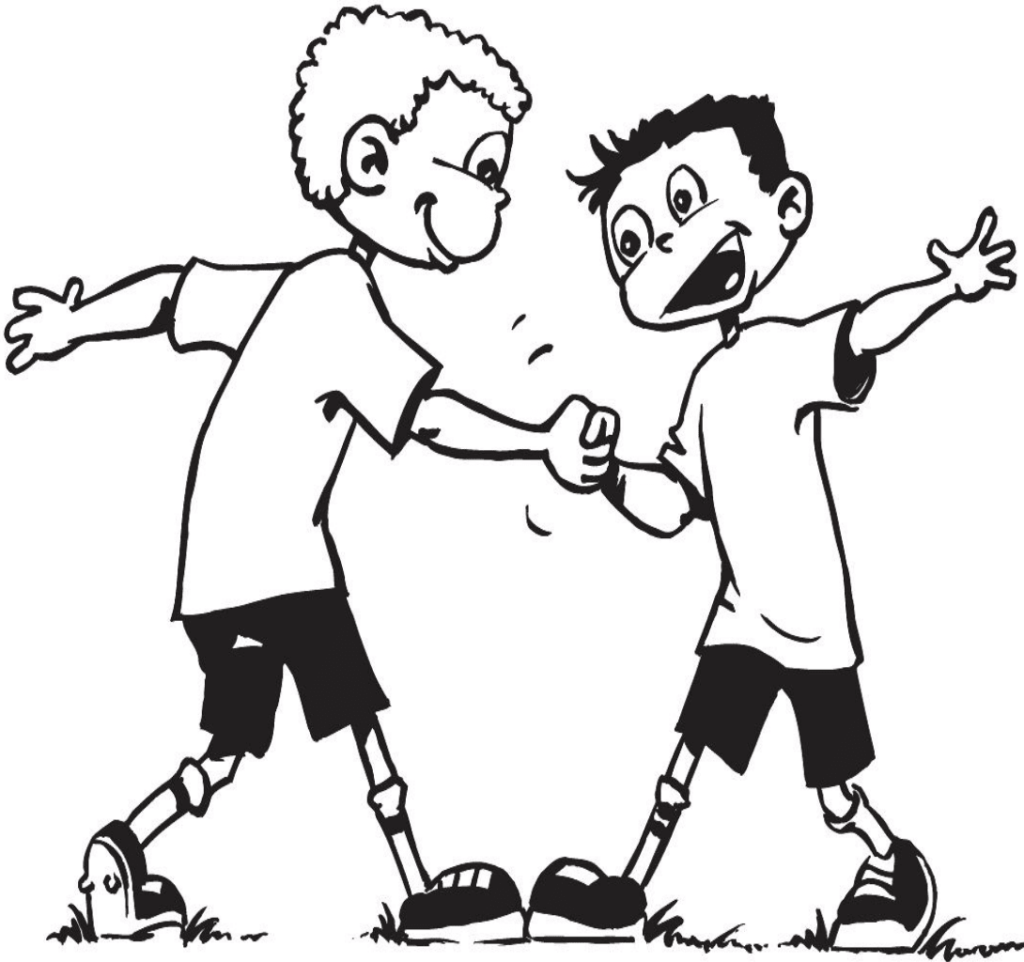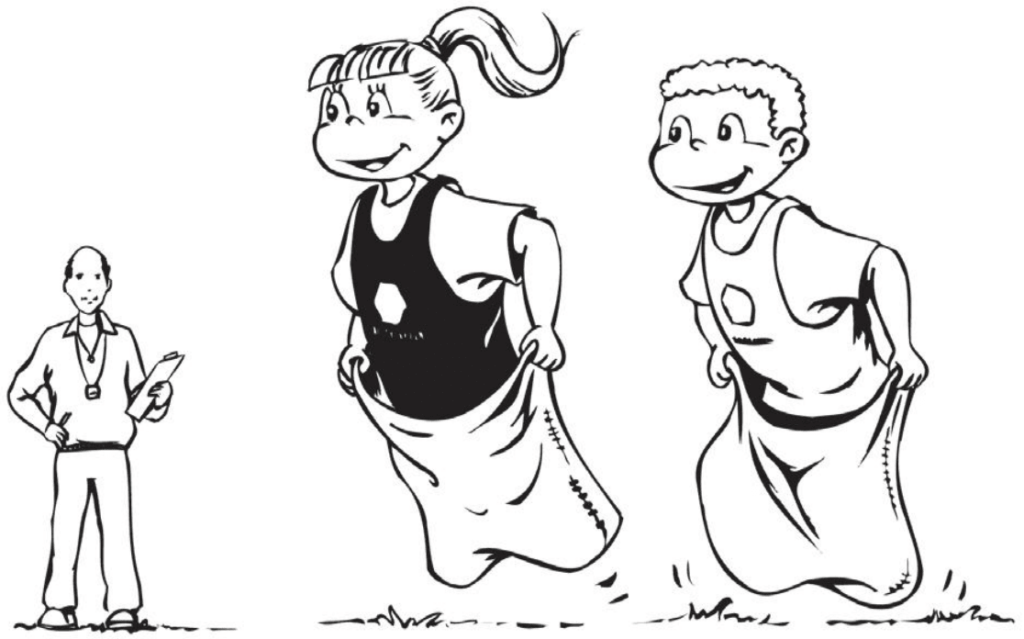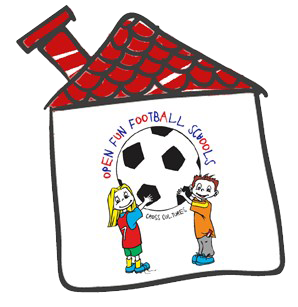Games
Balance & Stability
One of the first football lessons taught at this age is, how to maintain stability and balance, when changing the rhythm, pace, and direction during a match. (It is essential that we lower the body gravity centre, bend the hip, knee, and ankle gently, and keep our legs slightly apart)
EXERCISES
- Chaotic movement and running in limited space, emphasising stability (avoiding collisions, half-turns, and turns).
- Running free-style and standing on one foot at the coachs signal (change feet);
- Running free-style abruptly changing direction at the coachs signal;
- Jumping from a stable position and turning by 90, 180 or 360 degrees in both directions (in place);
- The same as above, only this time making a one-foot jump from a start-up.
- Walking on a rope.
- Each player has a small jumping rope and uses it to make a circle, snake, or line jumping and playing around it, performing pirouettes, and other figures.
- The same as the previous exercise, except that players are working in pairs and making synchronised jumps, turning and landing on one or both feet, observing their balance and rhythm.
- Cross a rope. One player is in each of the fields performing his/her figures at the coachs request.
- Option: One player could be performing, while the other three imitate his/her movements.
- Chaos dribbling in limited space; keeping the balance.
- At the coachs signal, players sit on the ball.
- When dribbling, step on the ball with one foot and drag it with the heel (of the same foot) in the desired direction.
- Dribbling in various ways. At the coachs signal, stop or change your activity (jump over the ball to maintain balance and stability, sit on the ball);
A tame ball
- Toss the ball high in the air and stop it by trapping it after it has bounced off the ground; you can trap it with your hands, feet, and different parts of your body.
- Toss the ball high in the air and once it has bounced off the ground jump over it with your legs apart, so that it does not touch you.
- Put the ball on your forehead and try to keep it in that position as long as you can.
- Put the ball behind your neck and try to keep it there as you move; don’t let it drop.
- From the same position try to toss the ball above your head and receive it using various techniques.
- Dribble the ball with a cone on your head.
- Pass the ball to a partner on one foot.

Mind your back
A player is in a marked area trying to keep his/her back from others, turning simultaneously with a lowered body gravity centre. Should he allow a player to touch his/her back, the player has to laugh in his/her face (that is why the first player has to move quickly and preserve a stable posture by running, jumping, and turning).
Working in pairs
Holding hands, pairs have to run past the cones, either with or without a ball (or with two balls).
A rooster fight
Jumping on one foot and rumpling with the shoulder; players may or may not be allowed to change the foot they are jumping on.
A fixed duel
In pairs, players face each other with arms at chest-height in a stable position or squatting. Clashing with their palms, they try to knock each other out of balance (one of them only has to move his/her leg for the other to score a point).
A duel on an imaginary log
This is a game in which two players are facing each other and holding hands (as in a handshake). At the same time, the tips of their feet are touching). The other leg/foot is leaning back in an effort to maintain the balance. Players are allowed to move that leg. The aim of this game is to knock the opponent out of balance by pushing him/her or pulling his/her arm (to the left or right). The game is over when one of them moves his/her front foot. The winner is the one who remains in the initial position.

A sack relay
This game is suitable for group competitions (4 or 6). Players are divided into groups of 8. The first player puts on a sack on his/her legs and holding it with his/her hands, jumps to a post and back. On returning, he/she gives the sack to the next player in line. The player puts it on and repeats the task. The team that completes the task first wins the race.
Catching the snake
One player is the, snake. He/she is dragging a rope or twisting it around, while the others are trying to catch its other end. The players are not allowed to tread on the rope. It can only be caught with the hand. The player who gets hold of the rope becomes the, snake.

Pulling, pushing, dragging
These games are suitable for all age groups and occasions. They can be organised as games for pairs or groups relative to the props we use. As has been shown in the pictures, all these games can be played without any props; however, all the aids and materials we use for physical practice (e.g. cones, jumping ropes, short and long bats, etc.) can be used to this end. As can be seen, there is no text to back the pictures, since these games are generally thought to be sufficiently simple and self-explanatory. However, we would like to make certain suggestions that will help you make these games even more interesting and accepted among those who will take them up. First and foremost, one has to make sure that all the rules are observed and respected; the area in which the games are to be played has to be clearly marked in advance (by drawing a circle, or in some other way). Each game should be repeated several times so as to create equal opportunities for all.
